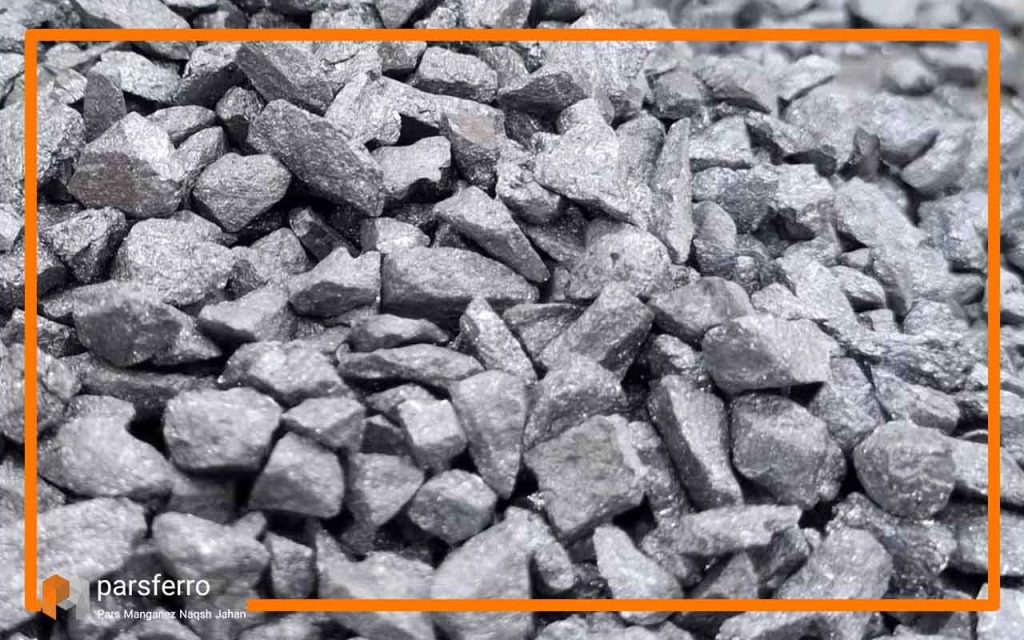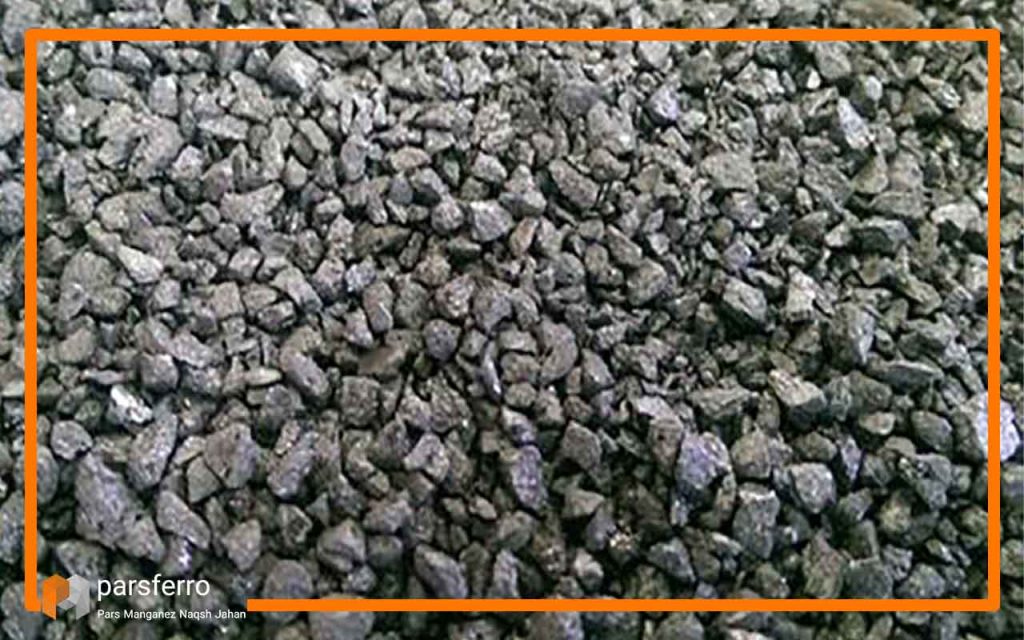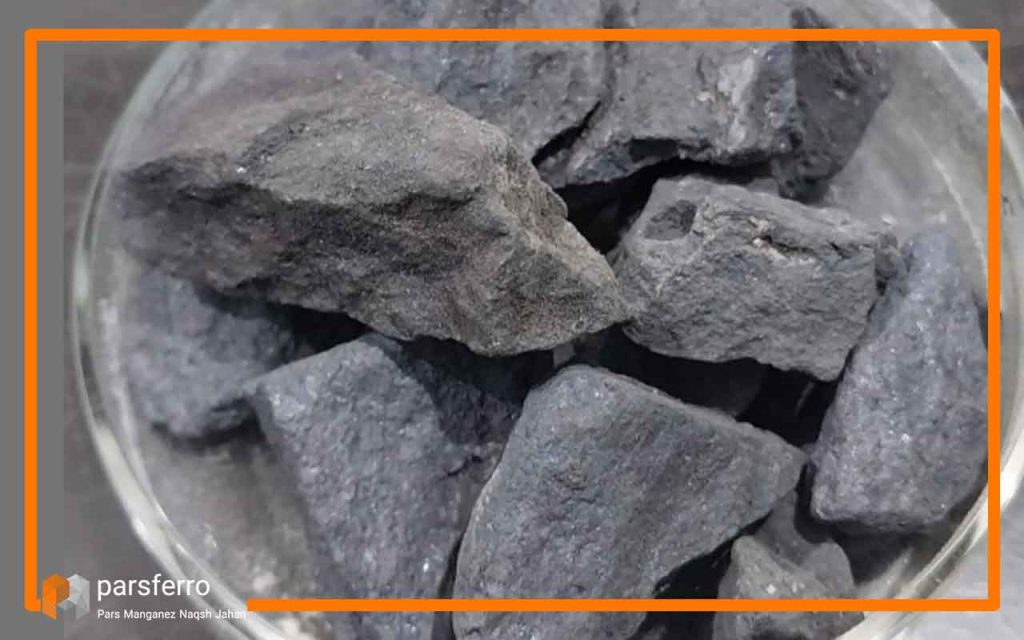Ferro magnesium formula, also known as ferromagnesium or ferro silicon magnesium, is an alloy composed primarily of iron (Fe), magnesium (Mg), and silicon (Si). This alloy is widely used in various industrial applications due to its unique properties and characteristics. In this article, we will discuss the composition, properties, uses, and significance of ferro magnesium formula.
Pars Manganez Naqsh Jahan, as a leading figure in the production of key alloy materials, plays a crucial role in the advancement and improvement of the steel industry. This company, committed to providing high-quality alloys, stands as a fundamental element in the supply of essential raw materials for steel production. By adhering to international standards and utilizing advanced technologies, Pars Manganese has been able to establish itself as a superior producer. The company is not limited to the domestic market alone; with the provision of top-quality alloys, it has managed to play a significant role in the global steel industry. For further consultation and information, you can contact us via email.
Ferro Magnesium formula
The chemical formula of ferro magnesium, often expressed as FeSiMg, encapsulates its fundamental components – iron (Fe), silicon (Si), and magnesium (Mg). The synergy of these elements defines the alloy’s core characteristics. The manufacturing process involves meticulous control over the ratios of these constituents, ensuring a homogeneous blend that aligns with the specific requirements of intended applications. Additionally, trace amounts of other elements such as aluminum (Al) and calcium (Ca) might be incorporated to fine-tune the alloy’s properties.
read more: ferro silicon magnesium composition
The production of ferro magnesium involves subjecting the elements to high temperatures, fostering a molten state where alloying occurs. This process results in a material with a complex crystalline structure, exhibiting properties distinct from its individual components. But based on ferro magnesium formula its composition is as bellow:
- Silicon (Si): 40-50%
Silicon is the primary element in ferro silicon magnesium and contributes to the deoxidation and graphitization of the iron.
- Magnesium (Mg): 4-15%
Magnesium is added to promote the formation of spheroidal graphite in ductile iron, improving its mechanical properties.
- Iron (Fe): Balance
Iron is the base metal, and the remaining composition is primarily iron to which the other elements are added as alloying agents.
- Calcium (Ca): 1.5-3%
Calcium is often added for desulfurization and to modify the shape of the graphite in the iron.
- Aluminum (Al): 1% max
Aluminum is used for deoxidation and can also help control the size and shape of graphite nodules.
- Total Rare Earth Elements (TRE): 0.5-20%
Rare Earth Elements (REE) are added to improve the nucleation of graphite and provide other beneficial effects. The specific composition of REEs can vary widely.

It’s important for manufacturers and users to specify the desired composition based on the properties needed for a particular application. The production of ductile iron involves careful control of the alloying elements to achieve the desired microstructure and mechanical properties.
Properties of Ferro Magnesium
According to the ferro magnesium formula this alloy possesses certain properties, which are listed below:
- High Melting Point: At the heart of ferro magnesium’s utility lies its impressive melting point. This attribute renders it invaluable in applications where exposure to elevated temperatures is a constant, such as in steel production.
- Strength and Hardness: Ferro magnesium boasts enhanced strength and hardness, endowing materials with durability and resilience. This makes it a preferred choice for components subjected to demanding mechanical forces.
- Corrosion Resistance: the alloy exhibits commendable resistance to corrosion, a crucial factor in applications where exposure to moisture or corrosive substances is inevitable. This property contributes to the longevity of materials fortified with ferro magnesium.
- Thermal Conductivity: A high thermal conductivity characterizes ferro magnesium, facilitating efficient heat transfer. This property finds application in scenarios where managing and dissipating heat is paramount.
- Ductility and Malleability: Despite its formidable strength, ferro magnesium retains a degree of ductility and malleability. This flexibility is advantageous in processes requiring shaping or forming of materials.
- Alloying Properties: The addition of magnesium and silicon imparts unique alloying characteristics to ferro magnesium. This quality allows it to play a pivotal role in shaping the properties of the final alloy, adapting it to specific industrial needs.

read more: ferro silicon magnesium specification
Uses of Ferro Magnesium
Some of the Ferro magnesium application is as bellow:
1. Steel Production: A main application of ferro magnesium lies in the steel production. As a nodulizer, it influences the microstructure of iron, particularly in the production of nodular or ductile iron. This modification enhances the mechanical properties and machinability of the steel.
2. Foundry Industry: Foundries rely extensively on ferro magnesium for the production of castings. Its role in modifying the solidification process of molten metal ensures the creation of cast iron and other alloys with desired characteristics.
3. Automotive Industry: The automotive sector integrates ferro magnesium into the manufacturing process of various components, including engine blocks and transmission housings. Its contribution to strength, heat resistance, and machinability aligns with the demand for durable and high-performance automotive parts.
4. Magnesium Production: Ferro magnesium serves a dual purpose in some applications by acting as a source of magnesium. The controlled release of magnesium during specific processes contributes to the properties of the final product.
5. Alloying Agent: Beyond specific applications, ferro magnesium serves as a versatile alloying agent. Its incorporation in the production of various alloys ensures the desired balance of properties in the resulting material.

Significance of FerroMagnesium formula
Here are some key points regarding the significance of ferro magnesium formula:
1. Enhanced Material Properties: The addition of ferro magnesium to iron-based alloys elevates their mechanical and thermal properties. This enhancement is crucial in applications where materials are subjected to demanding conditions.
2. Improved Castability: Foundries benefit from the use of ferro magnesium, which improves the castability of metals. This, in turn, reduces the occurrence of defects in castings, ensuring the production of high-quality components.
3. Contribution to Steel Quality: In the steel industry, ferro magnesium plays a pivotal role in the production of high-quality steel. Its influence on toughness, ductility, and other mechanical properties enhances the overall quality of the final steel product.
4. Weight Reduction in Automotive Components: Automotive manufacturers leverage ferro magnesium to create lighter components without compromising strength. This aligns with the ongoing industry trend of weight reduction for improved fuel efficiency without sacrificing performance.
5. Cost-Effective Alloying: Ferro magnesium offers a cost-effective means of alloying. This economic advantage, coupled with its performance benefits, positions it as a preferred choice for industries seeking a balance between material excellence and production efficiency.

read more: Ferro silicon magnesium uses
Conclusion
In summary, the ferro magnesium formula, denoted by FeSiMg, represents a key alloy with a composition of iron, magnesium, and silicon, augmented by additional elements for specific applications. This alloy’s significance lies in its diverse properties, including high melting point, strength, corrosion resistance, and alloying capabilities, making it crucial in steel production, foundries, and the automotive industry. Beyond technical merits, the ferro magnesium formula plays a key economic role, offering a cost-effective solution for alloying while contributing to the ongoing trend of weight reduction in automotive components. Based on the the ferro magnesium formula its main use is as a nodulizer in cast iron.


No comment